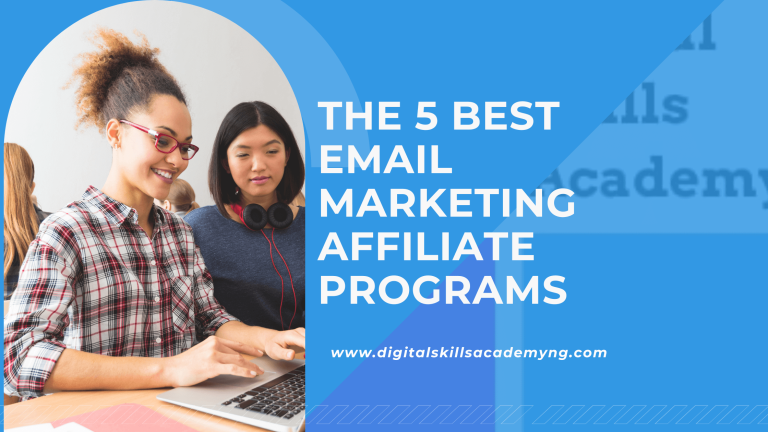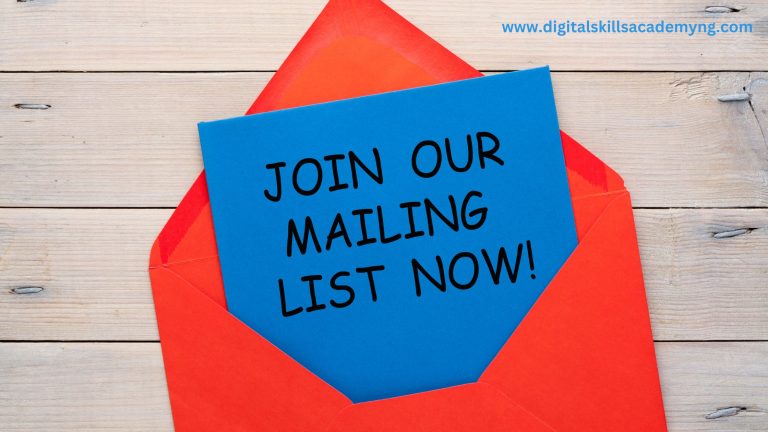Email Marketing: Why your business needs it.
If you’re running a real business, email is still the most effective way to universally reach people who have expressed interest in your product.
Email is one of the most used medium in the industrial world. Email marketing is a vibrant and powerful way to connect with people. Bringing it home, think about your own experiences. Do you even know anyone who doesn’t have an email address? If yes, then they are very few people.
According to Hubspot, 86% of consumers would like to receive promotional emails from companies they do business with at least monthly (with 15% preferring daily emails).
Emails are the quickest way to announce a sale, share company news, or remarket to previous customers.
Email marketing is the act of sending a commercial message, typically to a group of people, using email.
In its broadest sense, every email sent to a potential or current customer could be considered email marketing. It involves using email to send advertisements, request business, or solicit sales or donations.
Its primary objectives are to build loyalty, trust and brand awareness. The term usually refers to sending email messages with the purpose of enhancing a merchant’s relationship with current or previous customers, encouraging customer loyalty and repeat business, acquiring new customers or convincing current customers to purchase something immediately, and sharing third-party ads.
If you are still wondering how email marketing will positively impact your business, here are 5 reasons why you should start using email marketing right now.
Importance of email marketing.
1. Keeping a strong relationship with your audience
Table of Contents
Constant communication is the key to building a relationship. Businesses need to communicate with their customers regularly in order to keep them engaged and retain them in the long run. However, there aren’t too many reliable communication channels out there. While Ads can cost thousands of bucks, social media platforms limit how many people you can reach.
It’s nearly impossible to reach out to all your customers in person or by phone. Email marketing campaigns bridge that gap. You could even set up a drip marketing campaign to help you smooth out the process.
Emails have the ability to keep your customers informed.
Consumers can check their emails at any given time, when it is convenient for them. It can give them a feeling that you are thinking of them. This email can be as simple as : “Hi, you’re on our mind, here is a special offer for you!” or “hello we are doing a promo from first week of December….” Those that are on your email list will receive these messages.
So they will likely enjoy these emails (as long as you give them something worth reading) and it will boost engagement with your customers.
2. It’s affordable
While big businesses can afford to go all out and buy advertising space during the Super Bowl, small businesses don’t have that luxury of such expenses.
One of the most significant advantages of email marketing for small businesses is the efficient use of time, budget and awareness. You can reach a large number of consumers for less than pennies per message.
Profitability and cost-effectiveness are two of the many benefits of email marketing.
Think about it, most digital marketing channels cost a huge chunk of money. While SEO takes a lot of investment upfront to have long-term success, social media and advertisements can take up a large chunk of your marketing budget.
Email marketing is different in this regard. It doesn’t cost you much to generate a staggering 3800% return on investment(R.O.I.).
In email marketing, you’ll only have to bear the expenses of composing emails and the marketing automation software. There are no additional costs for the clicks or opens. This is much more affordable than other marketing channels, which often charge based on generated results.
3. Targeted messaging
When it comes to lead nurturing – sometimes referred to as email lead marketing. Your potential customers are at different stages of the buying cycle.
Some may be in the consideration stage, while others may be at the research and compare stage, and even others in the ready-to-purchase stage.
Creating buyer personas can help you determine what kind of content to create for each step to encourage them move to the next cycle.
Segmenting these customers into appropriate email marketing lists helps businesses target these groups more effectively. Customers need information to move them to the next buying cycle stage; pushing the right content can do just that.
It’s all about moving these prospects down your sales funnel – not as quickly as possible, but as efficiently as possible.
you can segment your email lists by whatever customer characteristics you think are relevant to your business.
For example, if you’re an outfit brand, you can segment your customers by the outfit they like.
This way you can inform your female customers about your new products ,while not disturbing the guys who may be more interested in sweat pants and hoodies. And others who only signed up for shoes alone.
4. Email marketing is easy to measure
Email marketing makes accounting and measuring quite easy. Most email marketing services give you access to critical numbers like: Email open rates,Click rates, Delivery reports, Percentage of clicks, Emails opened by geography, Emails opened by device/browser.
Email marketing tools offer the ability to track what happens after you have sent out your email campaign. You can track delivery rates, bounce rates, unsubscribe rates, click through rates, and open rates. This gives you a better understanding of how your email campaigns are working, which ones to add or which ones to get rid of altogether.
If your customers not only want but expect daily emails, you better provide them. However, sending too many emails to consumers who don’t want more than one a week will see your unsubscribe rate increase. It’s all about knowing your customers and providing valuable content when they want it and how they want it.
5. Email generates website traffic.
Imagine you’ve grown your email list to 100,000 contacts, and you have an average click-through rate of 5%.
Now imagine you publish an article that announces your latest product launch and you share it with your email list. Even if 5% of the recipients click and visit your article, you’re going to have 5000 people who immediately know about your new product. At almost no cost!
In conclusion, email marketing is still a goldmine and if you are yet to start using it for your business, it is still not late, you can start today.




